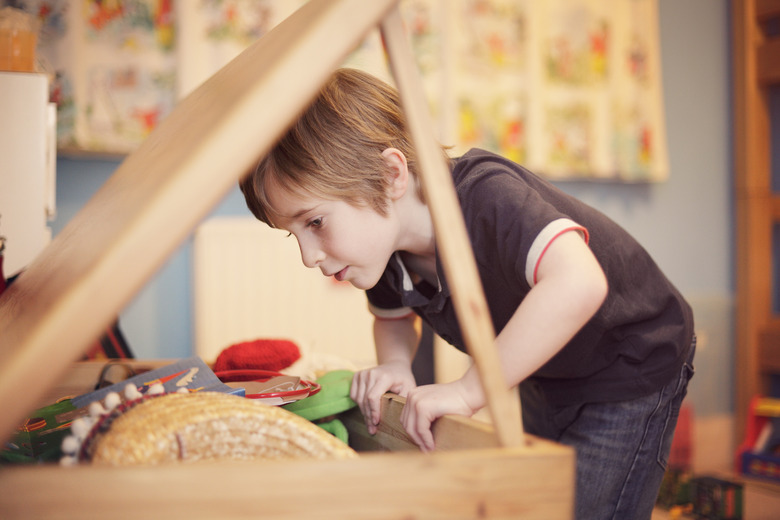How To Install A Lid Support For A Toy Chest
We may receive a commission on purchases made from links.
Take a minute to think about your child's toy chest. Although it seems like a fairly innocuous item at first glance, a toy chest does pose a small amount of risk if the lid falls down onto a child. Hopefully, the worst that happens is a few bruised fingers, but you don't want a heavy lid to fall while your little one is hanging over the box, stretching toward something at the very bottom. Fortunately, the proper lid support can prevent this issue.
How to Install a Lid Support for a Toy Chest
How to Install a Lid Support for a Toy Chest
The trick to installing a lid support is to play Goldilocks and get one that's just right. A support that is too weak won't hold the lid reliably. One that is too strong can make the lid extremely difficult to close. Once you've figured out what support strength you need, the rest is an easy matter of screwing the new support into its proper place.
When working on this project, know that a lid support is essentially a very sturdy soft-close hinge. If you've ever installed a soft-close hinge before, you'll likely find that the procedure feels quite familiar.
1. Calculate Your Needs
The first step is to determine what specifications you need to support your toy chest lid. This figure is calculated as torque (measured in inch-pounds) using the formula torque = (depth x weight) / 2.
- Measure the depth (front to back) of the toy chest lid in inches.
- Determine the weight of the lid. You can guesstimate this if you're good at that sort of thing, but the more accurate you are, the better. If it's not overly troublesome, it's best to take the lid off and actually weigh it.
- Calculate the required inch-pounds for the lid support. For example, a lid that is 20 inches deep and weighs 12 pounds requires a lid support with an inch-pound rating of 120 inch-pounds.
- Check the manufacturer specifications for the number of supports you need. They may recommend more than one support, depending on the support design and the lid weight.
2. Position the Supports
Your next step is to determine where you want your lid support(s) to sit. You may want to place one support in the middle of a short lid. You may also opt for a single support on the left or right side of the lid. You can also choose between supports that mount on the inside back of the toy chest or those that attach to the sides. The important thing is that when you're done, the torque specs of all your supports adds up to the amount you calculated in the first step.
- Open the support hinge.
- Open the toy chest and ask a helper to hold the lid in the open position.
- Position the lid support on the inside of the lid where you would like it to go. Make sure the support you choose is properly labeled as being for the left or right side of the chest.
- Screw the top portion of the support in place, stopping before the screws get tight.
- Place the bottom portion of the support against the inside back of the chest. Position a combination square on the lip of the toy box and use it to align the support hinge properly. You want the support hinge to sit perfectly perpendicular to the back of the toy box.
- Screw the bottom of the support bracket in place, again stopping before the screws are tight.
Tip
If you're concerned that your toy chest material will split when driving the screws into it, feel free to drill pilot holes before installing the screws. It's crucial to verify your alignment before doing so, however, so that you know the holes are in precisely the right position.
3. Tighten the Supports
Before screwing down the support hinge firmly, make sure you have everything where you want it. Use your combination square to ensure that the support hinge is properly aligned. If it isn't, the toy box won't close properly.
- Adjust the hinge as needed to keep it perfectly upright and flush with your combination square. You won't have a lot of wiggle room at this point, but if you kept everything properly aligned throughout the process, you won't need a lot of adjustment.
- Tighten the screws firmly into place. Be careful not to overtighten them, which can strip the wood.
